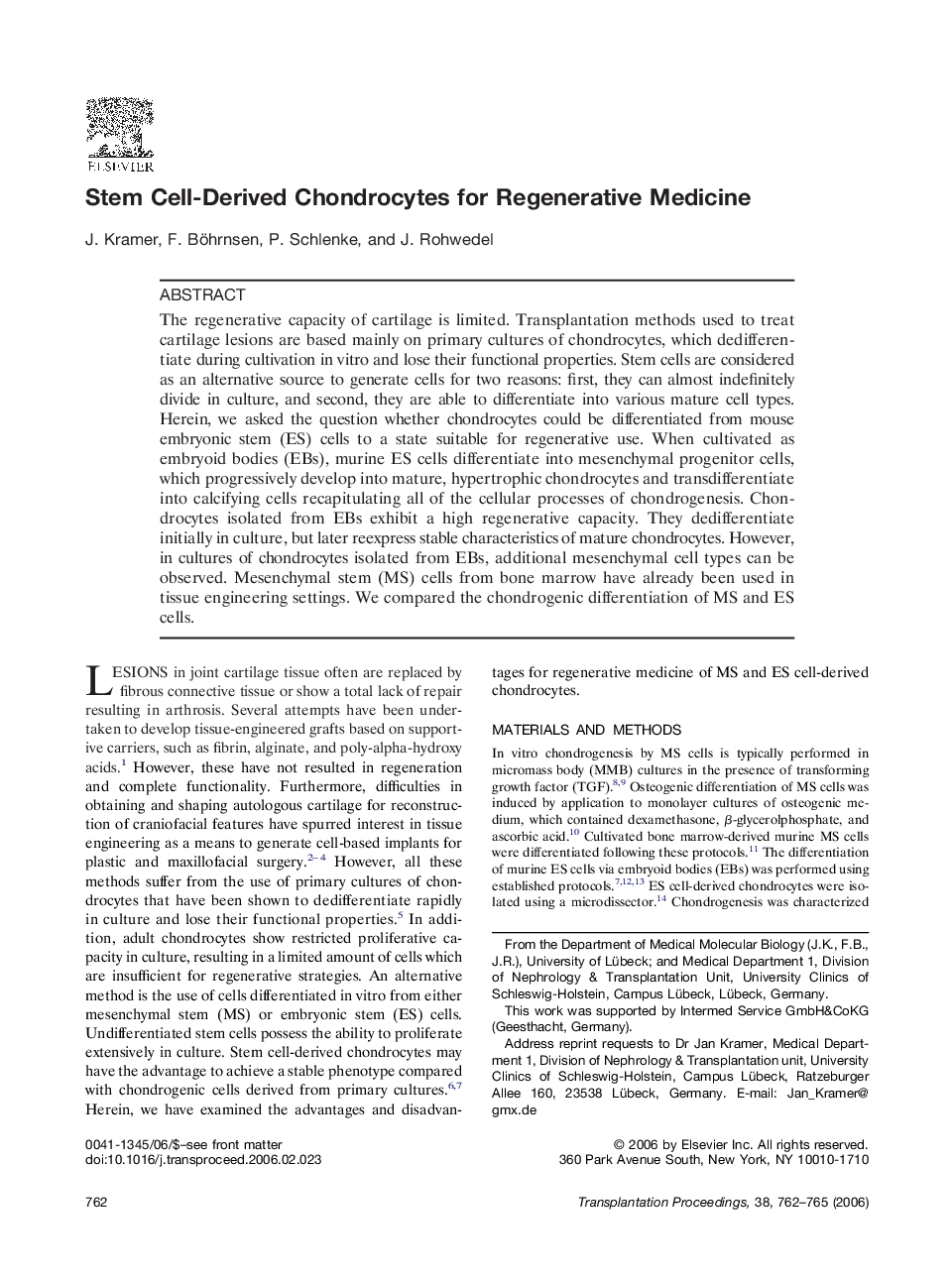| Article ID | Journal | Published Year | Pages | File Type |
|---|---|---|---|---|
| 4263006 | Transplantation Proceedings | 2006 | 4 Pages |
The regenerative capacity of cartilage is limited. Transplantation methods used to treat cartilage lesions are based mainly on primary cultures of chondrocytes, which dedifferentiate during cultivation in vitro and lose their functional properties. Stem cells are considered as an alternative source to generate cells for two reasons: first, they can almost indefinitely divide in culture, and second, they are able to differentiate into various mature cell types. Herein, we asked the question whether chondrocytes could be differentiated from mouse embryonic stem (ES) cells to a state suitable for regenerative use. When cultivated as embryoid bodies (EBs), murine ES cells differentiate into mesenchymal progenitor cells, which progressively develop into mature, hypertrophic chondrocytes and transdifferentiate into calcifying cells recapitulating all of the cellular processes of chondrogenesis. Chondrocytes isolated from EBs exhibit a high regenerative capacity. They dedifferentiate initially in culture, but later reexpress stable characteristics of mature chondrocytes. However, in cultures of chondrocytes isolated from EBs, additional mesenchymal cell types can be observed. Mesenchymal stem (MS) cells from bone marrow have already been used in tissue engineering settings. We compared the chondrogenic differentiation of MS and ES cells.
